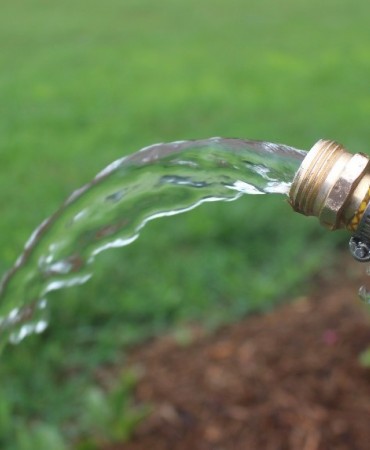You’ve done everything perfectly! It went just as you planned: the correct species of tree, planted at the correct depth, planted at the correct time of year, and planted in an appropriate location. And it looks beautiful. It’s a great addition to your landscape, the city, and the environment. Be proud of your accomplishment, but don’t rest on your laurels. The long-term health and success of your tree depends on you. Most trees are tough and resilient, but they do get thirsty! Water is an essential key to tree survival, especially in young, newly planted trees.
Even though Nashville receives more annual rainfall (49.2 inches) than Seattle, Washington (37 inches) does, the timing of the rainfall is what becomes critical. October is usually the driest month, so if you are planting trees in the Fall, then additional water is probably needed for plant survival. (U.S. Climate Data)
Just a few weeks without a significant rainfall or supplemental irrigation can lead to drought-type conditions in the soil profile. Lack of moisture in the soil can really be compounded when the air temperature is high, especially in summer or early fall.
When to plant
The best time to plant trees is when they are dormant, or at least not during their peak growth, because this is less disruptive to the trees. In general, the best time for planting trees is late fall or early spring. If you plant during these seasons, there is usually a period of moderate weather, which will give the transplant time to become established. Extreme cold during winter or extreme heat during summer can be very stressful to a newly transplanted tree, so it’s best to avoid those times for planting.
How to water
The best way to water trees is gradually with a soaker hose or by trickle or drip irrigation. Sprinklers are less efficient, but they are easy to use. Use an organic mulch to conserve moisture and apply water over the top of the mulch. Do not concentrate the water at the base of the tree. Most of the fine feeder roots of trees are located several feet from the trunk. Excessive watering at the base of the tree can lead to pest problems and root diseases.
Where to water
Watering should take place beneath the crown of the tree and extending a few feet beyond the drip line of the crown. Trees need not be watered closer than 3 feet to the base of the trunk and not much beyond the drip line. These are the areas generally beneath the foliage and shaded by the tree. Be sure that the water slowly soaks into the soil and does not run off.
When to water
The best time to water is during the evening hours and at night. Trees have a chance to replenish their moisture during these hours when they are not as stressed by hot temperatures. Watering at night allows effective use of water and less evaporative loss – an important sustainability bonus!
How much water and how often
The amount of water used in irrigation will depend on soil texture and structure, temperatures, and the amount and timing of previous precipitation. Trees should be watered once or twice a week in the growing season if there is limited rainfall. A few, high-volume waterings are more beneficial than many light and shallow waterings.
Root Nashville
With the increased efforts to establish trees in Nashville through multiple programs, including the ambitious Root Nashville initiative with a goal to plant 500,000 trees by 2050, there is a need to care for these trees after they are planted. Efforts should be made to ensure that trees, especially newly planted trees, are not stressed due to lack of water. Drought is a primary contributing factor to tree decline. Extended drought can influence the health of shade trees by the loss of absorbing roots. Most of the absorbing roots occur in the top 6 to 12 inches of the soil. Once the upper soil becomes dry, many absorbing roots dry out and die. Leaves and stems can also be damaged by drought conditions, especially when there is little water available for evaporative cooling and for photosynthesis and food production.
So, Nashville, let’s take care of our precious trees and provide them with the water they need! If we do, they will provide us with shade, oxygen, animal habitat, and beauty for many years to come.
Blog Author
This blog was guest authored by Michael Barry, County Director of Agricultural Extension Metro Nashville and Davidson County.


